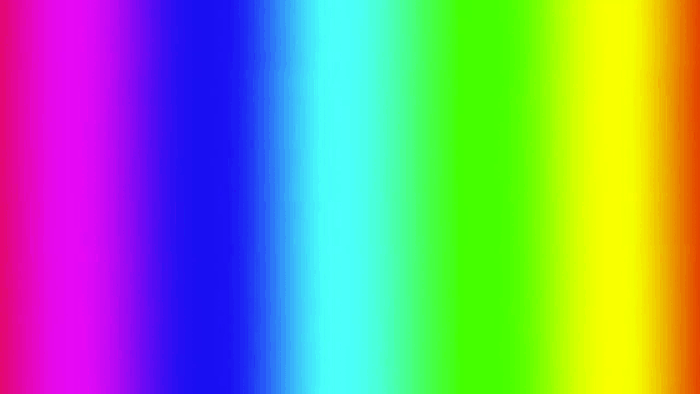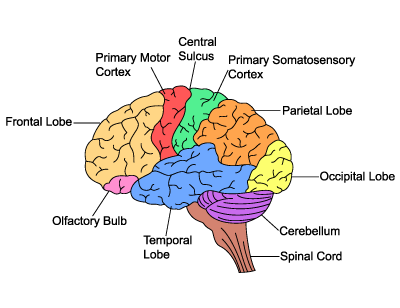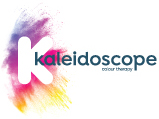The science of Kaleidoscope Therapy
The Licenced Practitioner Certificate training course and some of the Kaleidoscope Therapy Enrichment workshops explore the electromagnetic spectrum, brain chemicals, history of using colour and light as a medicine and the psychology and characteristics of colour both as pigment and light within the spectrum in greater detail.

The Electromagnetic spectrum
Electromagnetic energy originating from the sun ranges from the longest wavelengths, namely radio waves, to the shortest wavelengths, which are cosmic rays.
All of these rays are measured in metres and nanometres. All the electromagnetic energy travels at approximately 186,000 miles per second.
Except for visible light, all the electromagnetic rays are invisible to the human eye but are utilised by both science and medicine, sometimes beneficially but sometimes with detrimental results.
Colour can be used in the same way. It resonates and impacts on our bodies. The lack of this visible light causes fatigue SAD syndrome and other physical problems. For instance lack of vitamin D and bone weakening.
We are aware of feeling so much better on sunny light days and the lengthening day light hours literally lift people’s spirits. Colour and light is a Science. In fact, it is Quantum Physics.
Light entering the human eye affects the autonomic nervous system via the second non-visual route which connects the eye to the pineal gland. A small number of nerve fibres leaving the eye travel along the optic tract and allow nerve impulses from the eye to be transmitted from the brain to the spinal cord. The impulses leave the spinal cord, just below the neck, to enter the sympathetic nervous system and then back to the pineal gland
The pineal gland is frequently described as the ‘light meter’ of the body, receiving information from the environment about light and darkness by way of the eyes.

It is important for the eyes to absorb natural daylight. It is believed that a number of today’s diseases are caused through light malnutrition and that our general health will improve greatly if we allow ourselves at least 30 minutes outdoors a day without wearing sunglasses or contact lenses.
As our body vibrates so it resonates with the electrical energy of the electromagnetic spectrum. Whether or not that energy is visible to the human eye we are affected either positively or negatively by our exposure to these wavelengths.
Colours generate electrical impulses and magnetic currents or fields of energy that are prime activators of the biochemical and hormonal processes in the human body, the stimulants or sedatives necessary to balance the entire system and its organs
The Kaleidoscope room is designed to use precise colour temperatures through the light sources which optimise the lowering of cortisol (stress) in the brain and bring about a sense of calm and relaxation. In much the same way as medically certain coloured light helps us breathe easier, certain colours aid digestion and certain colour raise our blood pressure. In hospitals green light reduces the flow of blood and jaundiced babies are placed under ultra-violet light in order to lower the levels of yellow bilirubin in the baby’s blood.
On the surface Kaleidoscope Colour Therapy appears simplistic and childlike, but behind this calming, non-intrusive, experiential method it is important to understand the science behind Kaleidoscope Colour Therapy.
The Licenced Practitioner Certificate training course plus some of our Enrichment workshops will explore the electromagnetic spectrum, brain chemicals, history of using colour and light as a medicine and the psychology and characteristics of colour both as pigment and light within the spectrum in greater detail.

The Electromagnetic spectrum
Electromagnetic energy originating from the sun ranges from the longest wavelengths, namely radio waves, to the shortest wavelengths, which are cosmic rays.
All of these rays are measured in metres and nanometres. All the electromagnetic energy travels at approximately 186,000 miles per second.
Except for visible light, all the electromagnetic rays are invisible to the human eye but are utilised by both science and medicine, sometimes beneficially but sometimes with detrimental results.
Colour can be used in the same way. It resonates and impacts on our bodies. The lack of this visible light causes fatigue SAD syndrome and other physical problems. For instance lack of vitamin D and bone weakening.
We are aware of feeling so much better on sunny light days and the lengthening day light hours literally lift people’s spirits. Colour and light is a Science. In fact, it is Quantum Physics.
Light entering the human eye affects the autonomic nervous system via the second non-visual route which connects the eye to the pineal gland. A small number of nerve fibres leaving the eye travel along the optic tract and allow nerve impulses from the eye to be transmitted from the brain to the spinal cord. The impulses leave the spinal cord, just below the neck, to enter the sympathetic nervous system and then back to the pineal gland
The pineal gland is frequently described as the ‘light meter’ of the body, receiving information from the environment about light and darkness by way of the eyes.
It is important for the eyes to absorb natural daylight. It is believed that a number of today’s diseases are caused through light malnutrition and that our general health will improve greatly if we allow ourselves at least 30 minutes outdoors a day without wearing sunglasses or contact lenses.
As our body vibrates so it resonates with the electrical energy of the electromagnetic spectrum. Whether or not that energy is visible to the human eye we are affected either positively or negatively by our exposure to these wavelengths.
Colours generate electrical impulses and magnetic currents or fields of energy that are prime activators of the biochemical and hormonal processes in the human body, the stimulants or sedatives necessary to balance the entire system and its organs
The Kaleidoscope room is designed to use precise colour temperatures through the light sources which optimise the lowering of cortisol (stress) in the brain and bring about a sense of calm and relaxation. In much the same way as medically certain coloured light helps us breathe easier, certain colours aid digestion and certain colour raise our blood pressure. In hospitals green light reduces the flow of blood and jaundiced babies are placed under ultra-violet light in order to lower the levels of yellow bilirubin in the baby’s blood.
So why use colour in Kaleidoscope Therapy?
Pigment colour also plays an important role in our lives. They may remind us of a place, a time of year, or even a person. From a country’s flag, a football strip, nutritional coding, helping us remember facts, unravel complicated diagrams for example using the London underground map. Colour helps keep us safe, highlighting danger, telling us when to stop our vehicles at a busy junction and in many species it aids the attraction of a mate. Colours can even shape the way we feel.
However when it comes to what different colours symbolize in cultures around the world, these associations can vary greatly. Colours have shaped the history, emotions, and beliefs of different cultures since time began.
Colour is accessed in the right side of the brain and it is for this reason that we use Colour as a useful vehicle for expression in Kaleidoscope. Colour can still be accessed when a person is feeling anxious or angry.
Colour is inclusive and accessible in all languages, genres, ages, creed and cultures.
Kaleidoscope utilises our other senses too; such as hearing, touch and smell. A blind person has other senses that can be used.
The colour blue may be described by listening to the sound of the sea, holding something cold or smelling the aroma of chamomile or peppermint essential oils.
Colour is used in many different ways in several of the ‘Kaleidoscope 7 Steps’. Children and young people choose a colour to represent their feelings at a given moment in time. It is very important that no one ever has to say why they have chosen a colour.
Asking a child to do would defeat the whole object of using colour. Often children just don’t know why. It allows them to be honest with themselves about their own thoughts without the fear of having to explain themselves or judgements being made about them. It takes away the need to please others by giving a certain answer. Gradually children begin to make sense of their inner feelings and develop and acceptance of who they are and their strengths.
There are no bad colours and despite the practitioner learning about colour characteristics and the psychology of colour they also learn that our own personal experience of colours along with our creed and culture make this a very personal and useful metaphor for communication. For instance red can mean energy, strength, bravery and passion, but it can also mean anger, danger or aggression.
It is an unthreatening, non-intrusive way to learn to express ourselves. On these fundamental building blocks Kaleidoscope aims to build better self-awareness, self-belief, resourcefulness, resilience and reciprocity. With this comes the confidence to be healthier, happier and more successful.
So why use colour in Kaleidoscope Therapy?
Pigment colour also plays an important role in our lives. They may remind us of a place, a time of year, or even a person. From a country’s flag, a football strip, nutritional coding, helping us remember facts, unravel complicated diagrams for example using the London underground map. Colour helps keep us safe, highlighting danger, telling us when to stop our vehicles at a busy junction and in many species it aids the attraction of a mate. Colours can even shape the way we feel. However when it comes to what different colours symbolize in cultures around the world, these associations can vary greatly. Colours have shaped the history, emotions, and beliefs of different cultures since time began.

Colour is inclusive and accessible in all languages, genres, ages, creed and cultures.
Kaleidoscope utilises our other senses too; such as hearing, touch and smell. A blind person has other senses that can be used.
The colour blue may be described by listening to the sound of the sea, holding something cold or smelling the aroma of chamomile or peppermint essential oils.
Colour is used in many different ways in several of the ‘Kaleidoscope 7 Steps’. Children and young people choose a colour to represent their feelings at a given moment in time. It is very important that no one ever has to say why they have chosen a colour.
Asking a child to do would defeat the whole object of using colour. Often children just don’t know why. It allows them to be honest with themselves about their own thoughts without the fear of having to explain themselves or judgements being made about them. It takes away the need to please others by giving a certain answer. Gradually children begin to make sense of their inner feelings and develop and acceptance of who they are and their strengths.
There are no bad colours and despite the practitioner learning about colour characteristics and the psychology of colour they also learn that our own personal experience of colours along with our creed and culture make this a very personal and useful metaphor for communication. For instance red can mean energy, strength, bravery and passion, but it can also mean anger, danger or aggression.
It is an unthreatening, non-intrusive way to learn to express ourselves. On these fundamental building blocks Kaleidoscope aims to build better self-awareness, self-belief, resourcefulness, resilience and reciprocity. With this comes the confidence to be healthier, happier and more successful.
Neuroscience
According to Jaak Panksepp in his book Affective Neuroscience (1998) there are seven genetically ingrained emotional systems. These are: Rage, Fear, Distress (Panic), Play, Seeking, Care and Lust.
In order to help children and young people manage these feelings we need to provide four key functions:
1) Affect Attunement meeting the child’s emotional intensity (positive or negative) with tone, touch and facial expression to show you understand the intensity, quality of what the child is feeling in order to connect with the child’s experience.
2) Validation recognising how the child is experiencing the event, even if it is different from our own experience.
3) Containment of Feelings – being psychologically strong enough, kind enough and calm enough to be able to stay with the child’s feelings (e.g. rage, terror distress) without breaking down or getting angry.
4) Soothing (tension regulation) – calming the child with voice tone, eye contact, or touch. The child cannot manage the intensity of these feelings alone.
These four functions are built into the Kaleidoscope steps and are aided by the lighting, colours, sound, aroma, warmth and safety of a Kaleidoscope environment.
Brain chemicals
Stress is used to describe many situations in life today. Stress is actually anything that activates the hypothalamus to send messages to the pituitary gland to release cortisol, the stress hormone. Indeed we need to experience some stress to help us function normally.
It is important for humans to know when we are in danger and when we are safe. When in danger we need to be able to run or fight. The damage sets in when children are constantly ready for such fight or flight actions and are constantly on high alert.
This means that the thinking part of their brain cannot function. Kaleidoscope aims to reduce this level of cortisol in the brain and stimulate the release of positive brain chemicals such as dopamine, serotonin, oxytocin, noradrenaline and opioids. These hormones help us feel better about ourselves, soothe, motivate, aid concentration, vitality and give us a more positive mind-set.

The development of the brain’s frontal lobe relies upon a young baby being soothed and having its needs meet by a loving parent or guardian.
A well-developed frontal lobe helps us to regulate our feelings; self soothe and bounce back from disappointment. Good attachment is key to our wellbeing.
To be mentally and emotionally healthy human beings we have four basic human needs:
- Security
- Control
- Worthiness
- Identity
Within these umbrella headings we have the need for love, friendship and positive feedback from significant others.
At certain times of our lives the supply of some of these 4 basic needs will wax and wane. It is in these inevitable circumstances that we need to be able to fall back upon our reserves of self – belief, resilience, perseverance and resourcefulness.
A positive mind set and a strong sense of empathy and compassion help us to be more likely to be able to maintain healthy relationships with others.
Kaleidoscope Colour Therapy helps children and young people make sense of their world and provides the adults who care for them with the tools to facilitate this whilst looking after their own wellbeing.




